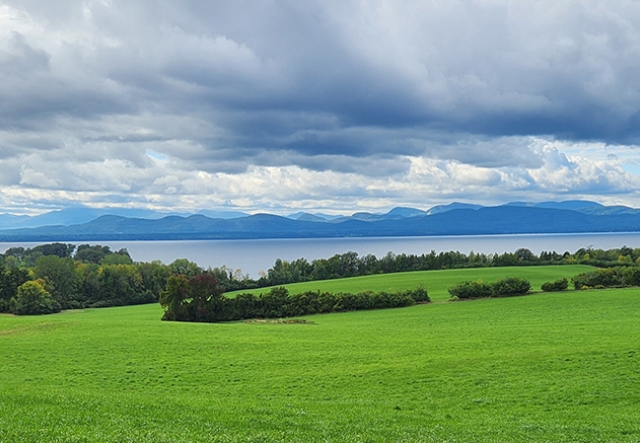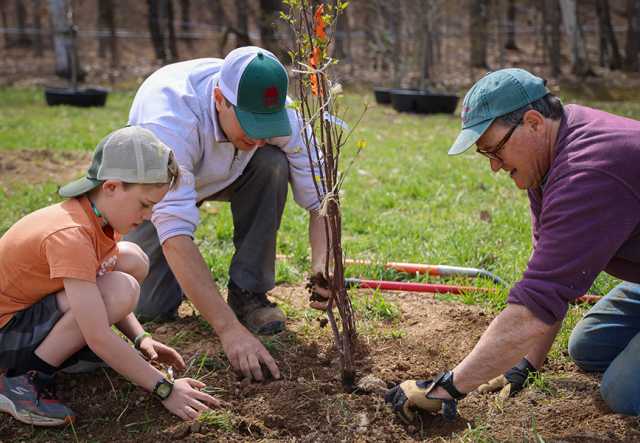Please tell Wally that of all, all, all the photos of Shelburne Farms that I've enjoyed over the years, the one that he took of leaves amid the lakeside stones is among the most beautiful and evocative *ever*. Thank you so so much.
Enjoying Late Fall at the Farm
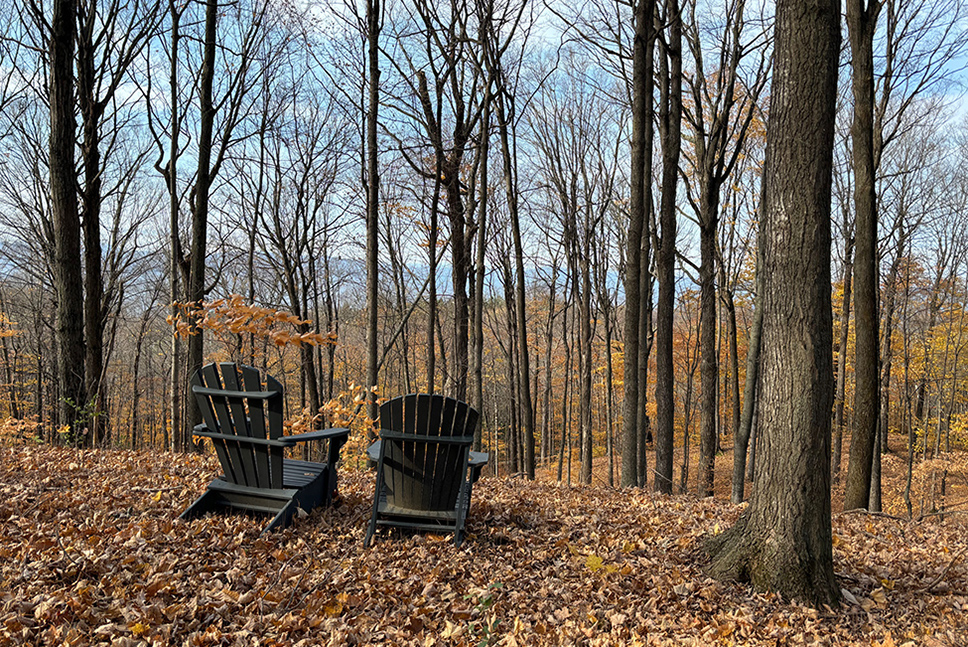
Late fall at the farm has a quieter kind of beauty, as it does across Vermont. “Stick season” gets a bad rap, but the fault may lay in us, not the season. You just have to look a little harder at the stripped landscape to find beauty in its contours, newly revealed views, and the textures and details of seasonal senescence.
There’s joy in the looking, and comfort and peace in a late fall stroll on this working farm. Here are a few of our favorite stops.
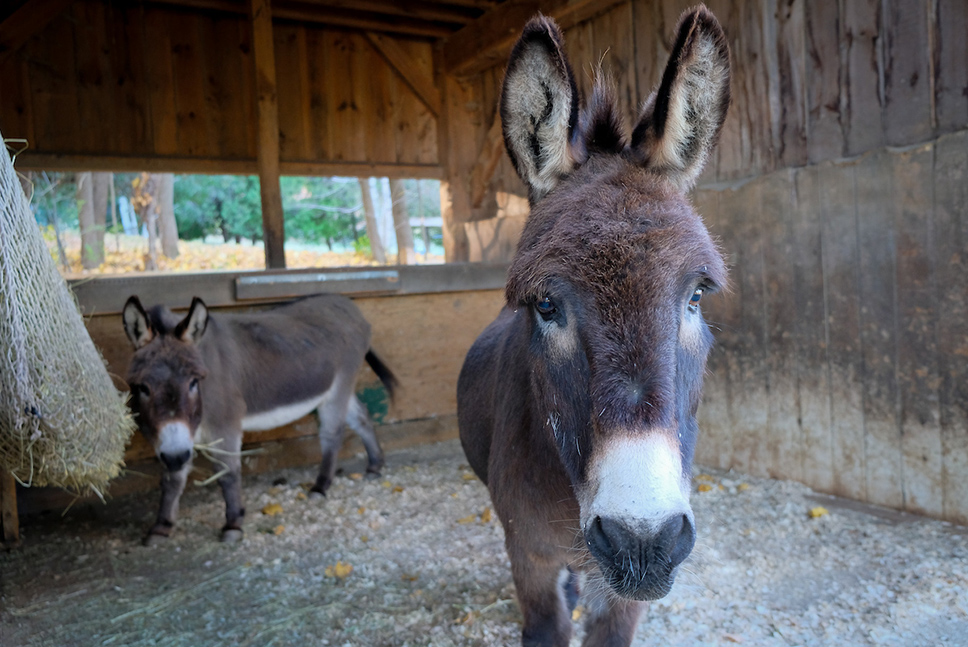
Take a walk to the Farm Barn (¾ of a mile from the Welcome Center parking lot) and say hello to the winter residents of the Children’s Farmyard. You’ll find miniature Sicilian donkeys Franco (in foreground, with a darker coat) and Brawny in the large pasture just south of the barn. Donkeys of all sizes are part of our shared agricultural history, used for transportation, carrying loads, and guarding livestock.
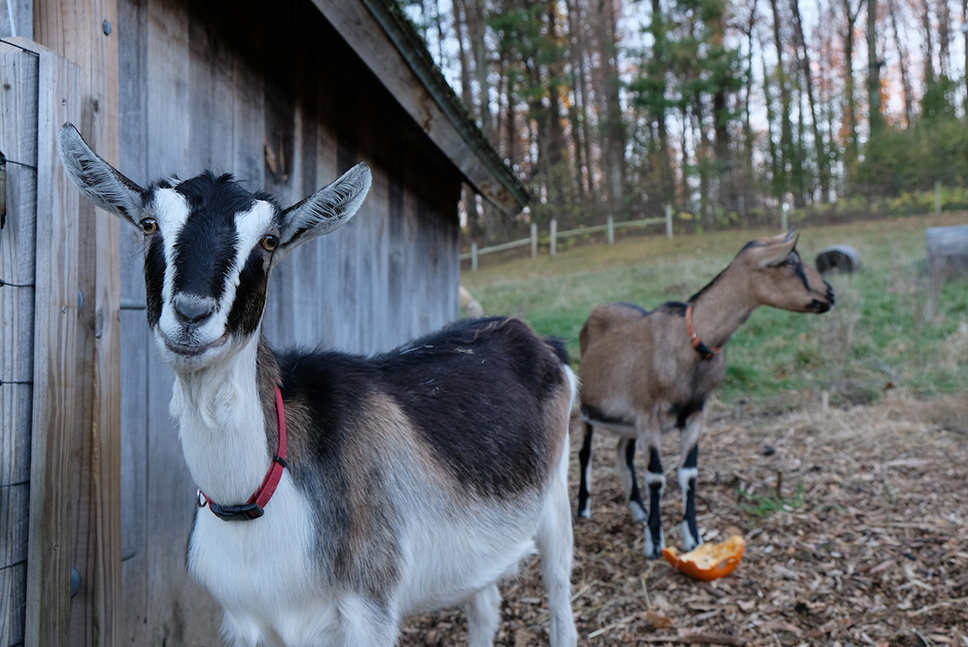
Further up the hill, visit our farmyard goats and sheep. Keep an eye out for the smallest lamb, aptly named Tinkerbell.
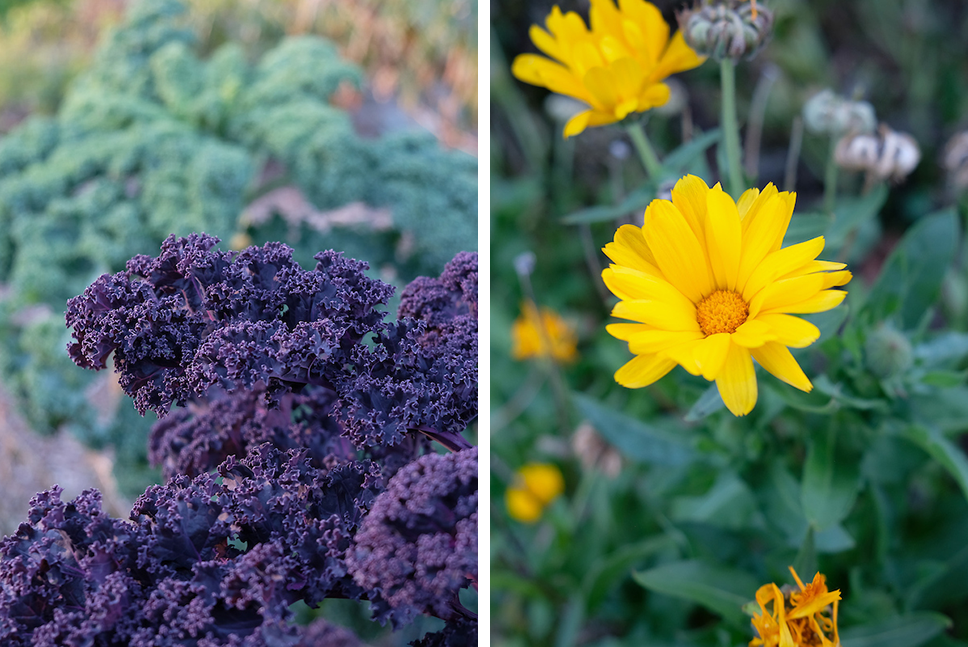
Crops like kale (left) and calendula shine into late fall, and this season’s warm temperatures have lengthened the show. Kale gets sweeter and more tender in fall. Have a taste test as you explore the area around the Farm Barn, including the lower Children’s Farmyard garden.
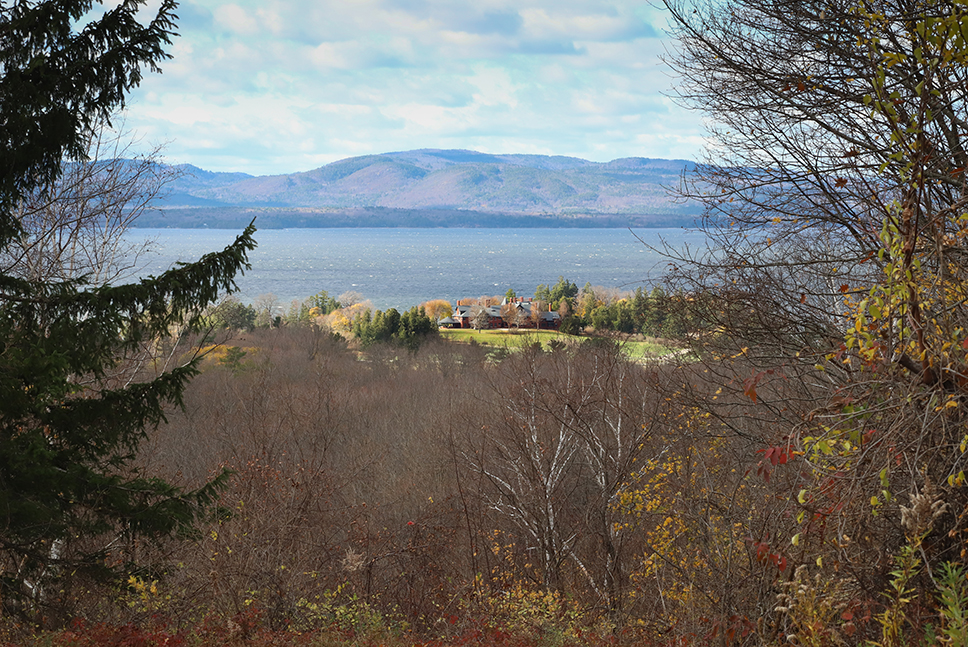
Lone Tree Hill never disappoints, especially as the clouds sift the sun to spotlight elements in the landscape—like the Inn, here, all buttoned up for the winter.
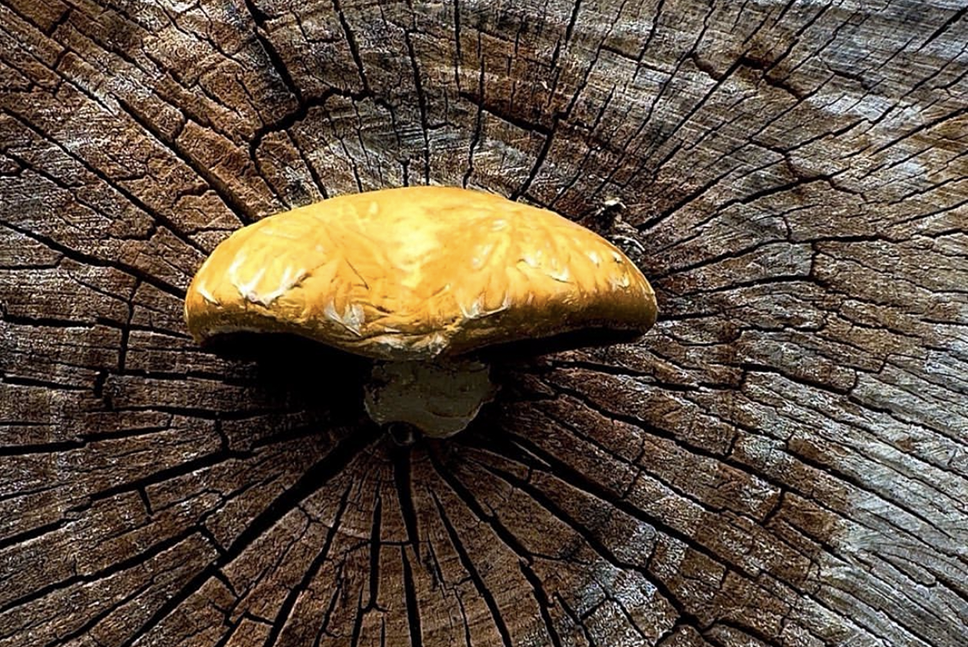
With the colorful leaves gone, mushrooms can take center stage on a walk through the woods, like this shelf or "bracket" mushroom. More on Vermont mushrooms.
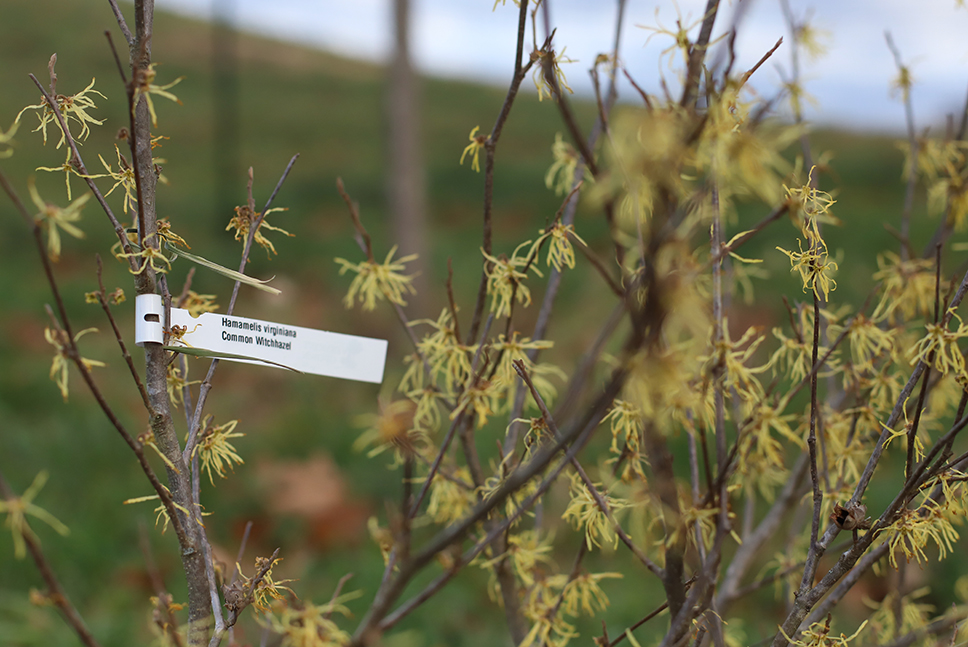
Visit Marshall Woods and imagine a future forested landscape. Look for the witch hazel (pictured), an understory shrub that, unusually, blooms October to December. Its ribbon-like petals curl and unfurl with swings in cold temperatures.
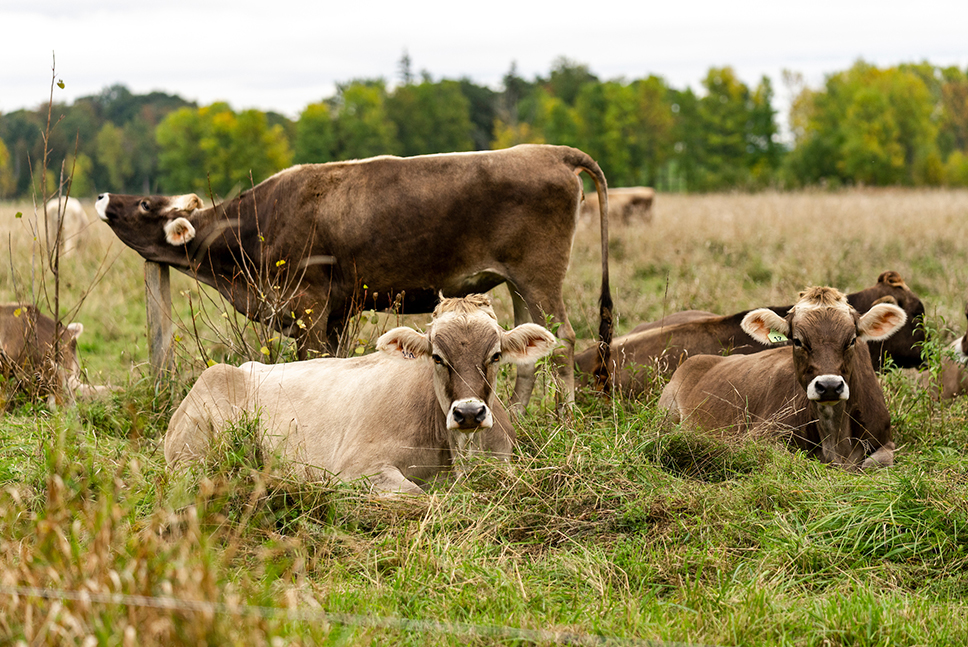
True grazing season is behind us, but our milking cows still spend several hours a day in fields near the barn and milking parlor to get fresh air and exercise. (Good for humans and animals alike!) The young, non-milking heifers have lower nutritional needs, so you'll find them in more wide-ranging pastures.
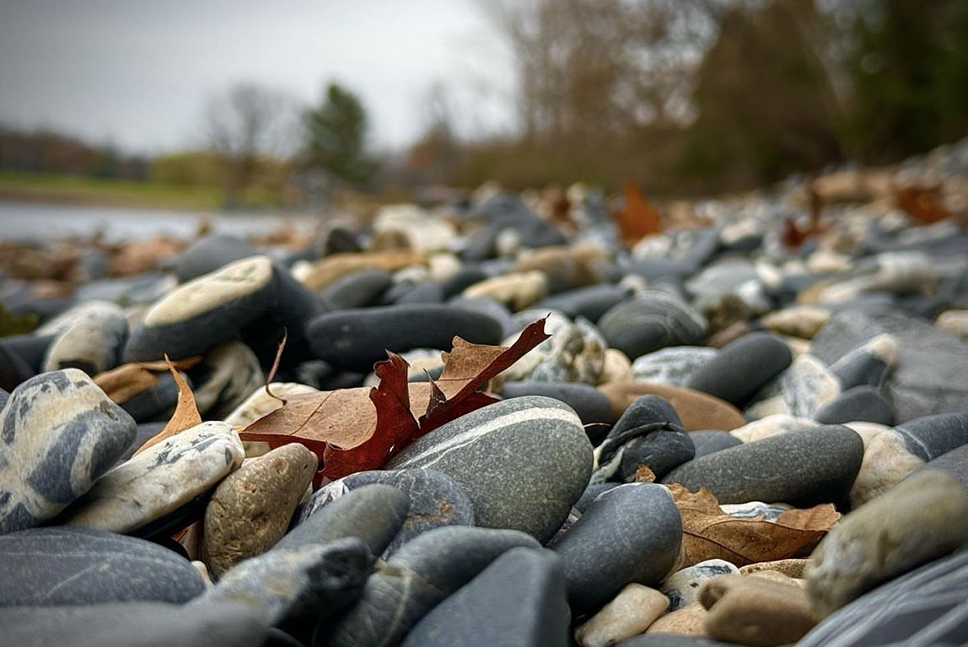
The lakeshore is often blustery at this time of year, but on a quiet day, exploring its rocks can be a meditative exercise—and a fun one. Find a heart-shaped rock, or one with a perfect white stripe. And why do so many stones have white lines?
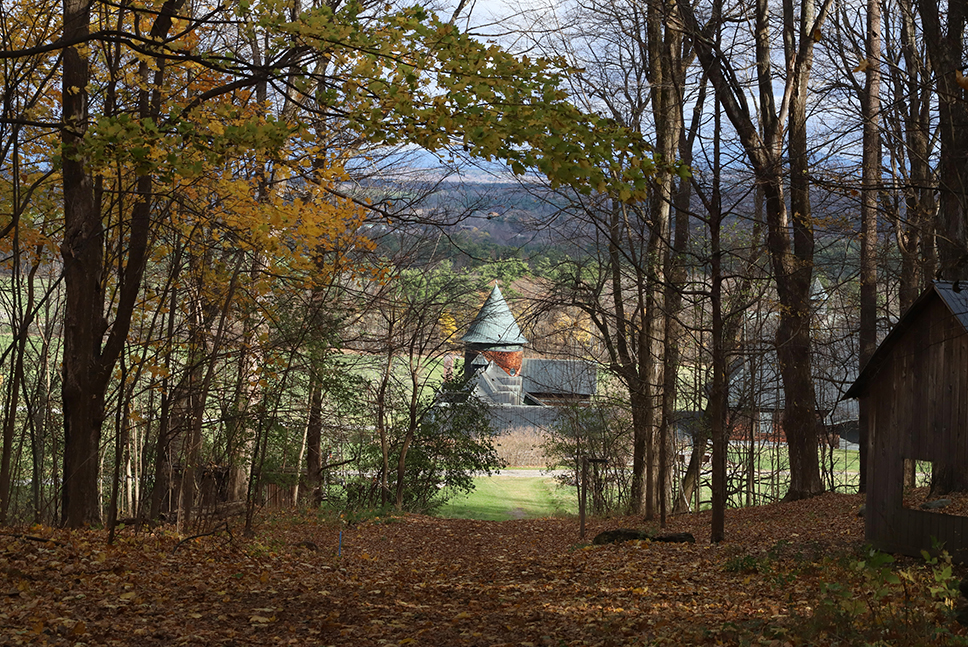
Wherever you are, we hope you get out and enjoy a late-fall walk. Thanks for visiting!
Your walk starts by parking at the Welcome Center & Farm Store. Check in before or after your walk to warm up and say hello! Trails close at sunset. See our Walking Trails Map or Visiting November to April.
Comments
When autumn arrives in Vermont there's no better place than Shelburne Farms to see panoramic views of the trees taking color in the woodlands and over the mountains to the east and west of the farm. I love to see the walkers and hikers, individuals, couples, and groups of friends everywhere I go. We exchange greetings accompanied by knowing smiles because we intuitively know that we are inhabiting one of Nature's sacred places.



